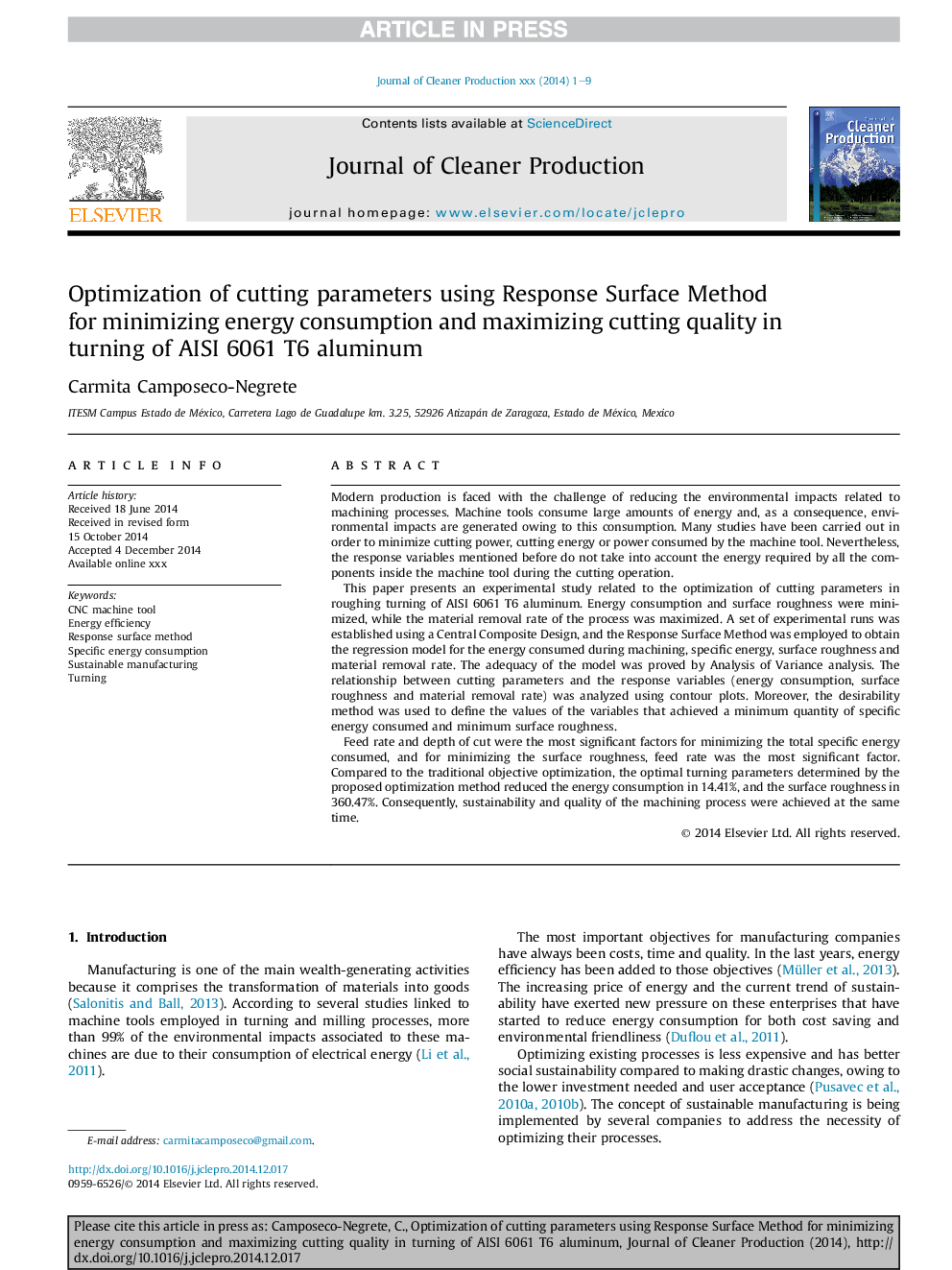| Article ID | Journal | Published Year | Pages | File Type |
|---|---|---|---|---|
| 8104880 | Journal of Cleaner Production | 2015 | 9 Pages |
Abstract
Feed rate and depth of cut were the most significant factors for minimizing the total specific energy consumed, and for minimizing the surface roughness, feed rate was the most significant factor. Compared to the traditional objective optimization, the optimal turning parameters determined by the proposed optimization method reduced the energy consumption in 14.41%, and the surface roughness in 360.47%. Consequently, sustainability and quality of the machining process were achieved at the same time.
Keywords
Related Topics
Physical Sciences and Engineering
Energy
Renewable Energy, Sustainability and the Environment
Authors
Carmita Camposeco-Negrete,
